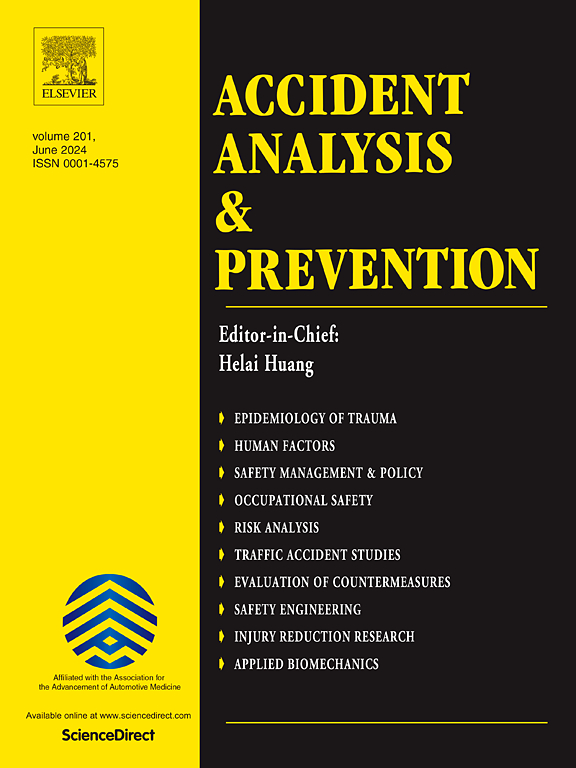改善施工区安全的驾驶风险评估和车载预警设计
IF 5.7
1区 工程技术
Q1 ERGONOMICS
引用次数: 0
摘要
本文章由计算机程序翻译,如有差异,请以英文原文为准。
Driving risks assessment and in-vehicle warning design for improving work zone safety
Work zones present unique risks to both workers and road users due to its complex and dynamic nature. This study developed a two-stage in-vehicle warning system aimed at refining driver behavior when approaching work zones and mitigating lane-changing risks. To accurately capture the thorough behavioral processes of drivers near work zones, a driving simulation experiment was conducted involving 38 participants of diverse genders and occupations. Different warning modes (baseline vs. two-stage warning), speed limits (60 km/h vs. 80 km/h), and visibility conditions (clear vs. fog) were incorporated into the experimental design. The entire behavioral performance was segmented into approaching and lane-changing processes. Generalized Estimating Equation (GEE) models were employed to analyze behavioral changes during the approaching process under different conditions, and Fuzzy C-Means (FCM) clustering algorithm was utilized for risk assessments. Influencing analysis was then applied to examine the relationship between behavioral changes during the approaching process and lane-changing risk levels. The findings reveal that, compared to the baseline group, the two-stage warning effectively reduced the average approaching speed by 2.25 %, increased the headway distance by 19.02 %, and advanced the starting point of lane-changing maneuvers by approximately 42.8 m on average, all of which contributed to a decrease in overall lane-changing risks. Under high speed limits, despite all drivers adhering to the speed limit, the phenomenon of relatively higher deceleration still persists, leading to unsafe and uncomfortable conditions. Additionally, the risk faced by drivers is significantly heightened when traveling at higher speeds in dense fog, further corroborating the necessity of the two-stage warning. The findings provide a theoretical foundation for the development of in-vehicle warning systems for work zone areas, offering practical implications for safe and efficient operations within work zones.
求助全文
通过发布文献求助,成功后即可免费获取论文全文。
去求助
来源期刊

Accident; analysis and prevention
Multiple-
CiteScore
11.90
自引率
16.90%
发文量
264
审稿时长
48 days
期刊介绍:
Accident Analysis & Prevention provides wide coverage of the general areas relating to accidental injury and damage, including the pre-injury and immediate post-injury phases. Published papers deal with medical, legal, economic, educational, behavioral, theoretical or empirical aspects of transportation accidents, as well as with accidents at other sites. Selected topics within the scope of the Journal may include: studies of human, environmental and vehicular factors influencing the occurrence, type and severity of accidents and injury; the design, implementation and evaluation of countermeasures; biomechanics of impact and human tolerance limits to injury; modelling and statistical analysis of accident data; policy, planning and decision-making in safety.
 求助内容:
求助内容: 应助结果提醒方式:
应助结果提醒方式:


